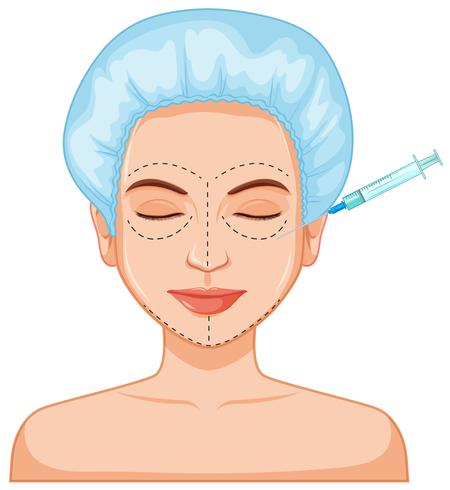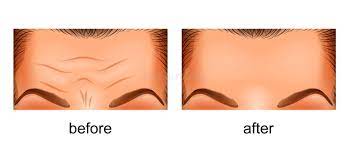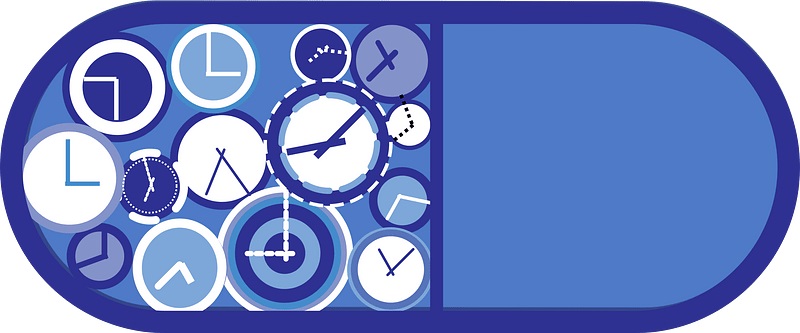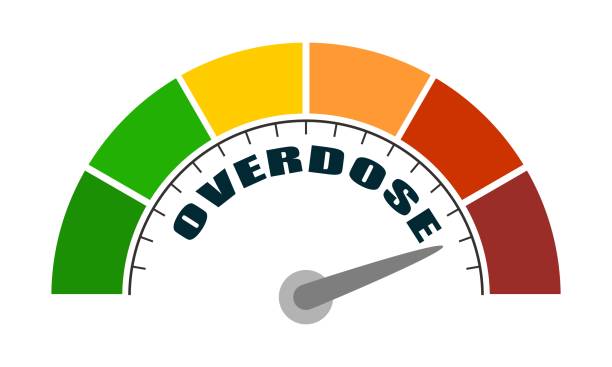Botox-100IU
- Introduction to Botox-100IU
- Composition and Characteristics of Botox-100IU
- How Botox-100IU Works
- Uses of Botox-100IU
- Off-Label Uses of Botox-100IU
- Dosage and Administration
- Common Side Effects of Botox-100IU
- Serious Side Effects and Complications
- Interactions with Other Medications
- Important Precautions and Warnings
- Special Considerations in Administration
- Handling and Storage of Botox-100IU
- Overdosage: Identification and Management
- Careful Administration: Techniques and Tips
- Conclusion: The Future of Botox-100IU
Introduction to Botox-100IU
Botox 100IU has become widely renowned for its effectiveness in various medical and cosmetic uses. This article thoroughly explores this substance's composition, features, and diverse applications, offering valuable insights into its historical background and current trends.
Overview of Botox-100IU
Botox 100IU, also called Botulinum Toxin Type A, is a neurotoxin that originates from the bacterium Clostridium botulinum. It serves as an illustration of how medical science utilizes the natural world for therapeutic applications. This specific formulation, containing 100 units (IU) of the toxin, is carefully crafted to ensure controlled and accurate usage in medical and aesthetic treatments.
Historical Perspective on Botox Use
The origins of Botox can be traced back to the 1800s when scientists first discovered its precursor, botulinum toxin. However, it wasn't until the 1900s that its potential as a therapeutic agent became fully realized. Dr. Alan Scott's groundbreaking research during the 1970s marked the beginning of Botox's transformation from a toxin to a valuable tool for medical treatment. It was initially used to address conditions like strabismus and blepharospasm, but its applications have since expanded significantly.
Current Trends in Botox Treatments
Nowadays, Botox 100IU has gained popularity in the field of cosmetic procedures. It is not just limited to reducing wrinkles but also offers medical benefits and aesthetic improvements. Recent trends indicate a rising interest in using Botox for treating migraines, excessive sweating, muscle spasms, and other conditions. Moreover, the fact that Botox injections are minimally invasive has contributed to its acceptance and enduring appeal among patients and medical professionals.
Composition and Characteristics of Botox-100IU
To truly grasp the effectiveness and safety of Botox 100IU, it is crucial to understand its composition and qualities. In this section, we will explore the details of its design, focusing on the active ingredients and their roles, as well as the distinct characteristics that distinguish Botox 100IU from other medications in the pharmaceutical realm.
Active Ingredients and Their Functions
Botox 100IU mainly consists of Botulinum Toxin Type A, a protein complex with a fascinating way of working. Its mechanism involves stopping the release of acetylcholine at the junctions between nerves and muscles, effectively blocking nerve signals to muscles. This temporary paralysis of muscles reduces wrinkles, muscle spasms, and various medical conditions.
The active ingredient is careful. It is formulated to ensure precise dosing and safety during administration. Each vial of Botox 100IU contains the specified concentration of Botulinum Toxin Type A, which ensures consistency and reliability in both aesthetic settings.
Unique Properties of Botox-100IU
Botox 100IU stands out due to its characteristics that contribute to its widespread use.
- One of its advantages is its high selectivity, as it targets explicitly specific muscles, providing localized treatment without impacting the surrounding tissues.
- Additionally, the effects of Botox 100IU are temporary. Typically, it offers patients the flexibility to achieve reversible results for a few months.
- Moreover, Botox treatments require downtime, allowing individuals to resume their daily activities promptly.
- Healthcare professionals can also customize Botox 100IU treatments according to each patient's needs, ensuring optimal outcomes.
How Botox-100IU Works
Botox 100IU is truly an advancement in the field of medicine. It is highly regarded for its workings and wide range of uses. In this section, we will delve into the workings of Botox 100IU, uncovering how it impacts the nervous system and the differences between its cosmetic and therapeutic uses.

Mechanism of Action
Neurological Effects of Botox
The effects of Botox 100IU on the system go beyond just relaxing muscles. It works by blocking the release of pain mediators, thereby interfering with pain signals. Additionally, it also affects nerve endings, resulting in a reduction in discomfort perception. The impact of Botox on the system has opened up possibilities for its use in managing pain.
Cosmetic vs. Therapeutic Applications
Botox 100IU is a substance that can be used for different purposes. Medicine is commonly employed to reduce wrinkles and fine lines and achieve a youthful appearance. On the side, Botox 100IU treats various conditions related to muscle spasms and disorders. Whether to use it for therapeutic reasons depends on the individual patient's needs and desired results.
Uses of Botox-100IU
The use of Botox 100IU2 goes beyond its cosmetic appeal. This section will explore how it is used for its aesthetic and therapeutic benefits.
Cosmetic Uses: Wrinkle Reduction and Skin Smoothing
Regarding beauty and aesthetics, Botox 100IU is considered the choice for achieving youthful and glowing skin without the need for invasive procedures. It effectively diminishes the visibility of lines and wrinkles, especially in areas prone to dynamic facial movements. By targeting wrinkles caused by muscle contractions like those on the forehead around the eyes (crow's feet). Between the eyebrows (frown lines), Botox 100IU delivers natural-looking results that give a refreshed appearance.

Medical Uses: Treating Muscle Spasms and Disorders
The therapeutic potential of Botox 100IU extends to treating medical conditions that involve abnormal muscle activity. For instance it can provide relief from muscle spasms, including dystonia, blepharospasm and hemifacial spasm by relaxing overactive muscles. Additionally Botox 100IU is used as a treatment for chronic migraines reducing their frequency and severity. It also proves effective, in controlling sweating (hyperhidrosis) by blocking the nerve signals to the sweat glands.
Detailed Exploration of Therapeutic Applications
Let's delve further into some therapeutic uses of Botox 100IU.
- It has proven effective in managing spasticity in conditions like palsy and multiple sclerosis, which helps improve the mobility and comfort of patients.
- Additionally, it is utilized to treat bladder and urinary incontinence, promoting better control over urinary functions.
- Botox 100IU can also relieve children's eye disorders such as strabismus (crossed eyes) and amblyopia (sight).
- Moreover, it offers a solution for Temporomandibular Joint Disorder (TMJ), alleviating pain associated with TMJ and improving jaw function.
Off-Label Uses of Botox-100IU
Botox 100IU, well known for its medical benefits, has delved into new areas by investigating alternative uses that expand its therapeutic capabilities. In this section, we will delve into the emerging applications of Botox 100IU, the ongoing research and advancements in off-label uses, and the ethical and regulatory aspects associated with these practices.
Emerging Therapeutic Uses
Apart from its applications, there is ongoing research into the potential therapeutic uses of Botox 100IU.
- Some preliminary studies suggest that Botox 100IU injections may help alleviate symptoms of depression by interrupting the facial feedback loop associated with expression.
- Moreover, there is promise in utilizing Botox 100IU to manage pain conditions such as neuropathic pain and myofascial pain syndrome due to its neuroinhibitory effects.
- Additionally, researchers are examining the benefits of Botox 100IU in treating neurological disorders like Tourette syndrome, restless leg syndrome, and post-stroke spasticity.
Research and Developments in Off-Label Applications
Exploring the uses of Botox 100IU beyond its approved indications is an exciting area of research.
- Ongoing studies in neuroscience are uncovering insights, into the specific neurological mechanisms that underlie the effects of Botox 100IU leading to the discovery of novel therapeutic possibilities.
- Researchers are also exploring the possibility of combining Botox 100IU with treatments to potentially enhance its effectiveness.
- Additionally innovative drug delivery systems are being developed to optimize how Botox 100IU is administered in clinical situations.
Ethical and Regulatory Considerations
The increasing range of off-label uses brings up regulatory concerns:
- Informed Consent: Doctors must ensure patients know about off-label uses, possible risks, and benefits before starting treatment.
- Oversight: Regulatory bodies have the responsibility to monitor and regulate off-label practices to protect patient safety and uphold ethical standards.
- Evidence-Based Medicine: Ethical considerations highlight the significance of relying on scientific evidence to support off-label applications.
Dosage and Administration
When using Botox 100IU for its benefits, it is crucial to be precise in dosage4 and how it is administered. This section will explore the suggested dosages for conditions, techniques for administration, and the best practices to follow. It will also cover any adjustments needed for specific groups of patients.

Recommended Dosages for Different Conditions
To achieve the results in therapy, it is crucial to administer the right amount of Botox 100IU, which differs based on the specific condition being treated:
- For cosmetic purposes, the doses are carefully determined to target particular facial muscles and usually range from 4 to 20 units per injection site.
- In some cases, therapeutic dosages can vary significantly, starting from 50 units and going up to 200 or more. The exact amount depends on factors such as the severity of the condition and how the patient responds.
Administration Techniques and Best Practices
Understanding administration techniques is crucial to ensure accuracy and minimize potential negative impacts.
- When it comes to injection sites, the selection of where to administer and the depth and angles utilized should be based on both treatment objectives and the patient's anatomy.
- Botox 100IU needs to be reconstituted using saline and aseptic techniques to maintain its effectiveness.
- The choice of needle gauge and length should be customized for each procedure to prioritize effectiveness and patient comfort.
Adjustments for Specific Patient Populations
Different patient. Characteristics call for customized approaches to determine the appropriate dosage and administration.
- In patients, dosage adjustments might be necessary due to changes in muscle tone and metabolism with age.
- Specific considerations must be considered for pregnant and lactating women, carefully weighing risks against benefits.
- Additionally, pediatric patients require dosing and administration techniques compared to adults to ensure safety and effectiveness.
Common Side Effects of Botox-100IU
Although Botox 100IU is generally considered safe and effective, it can sometimes cause a few side effects1. This section aims to provide information about these side effects, including suggestions on how to manage them and details about how often they may occur and how long they might last.

Minor Side Effects and Management
Patients who undergo Botox 100IU treatments may experience some side effects, which usually include:
- Localized Pain: It's common to feel discomfort at the injection site. It's generally temporary. You can find relief by using over-the-counter pain relievers or applying compresses.
- Swelling: Mild swelling may occur, but it typically disappears within a day or two. To help reduce swelling, avoiding physical activities and applying ice as needed is recommended.
- Bruising: There might be some bruising due to the needle insertion. It usually resolves within a week. Using creams with Arnica or topical vitamin K can help alleviate bruising. These are reactions that patients commonly experience after Botox 100IU treatments.
Frequency and Duration of Side Effects
The occurrence and length of these severe side effects can differ among patients:
- Occurrence: It is quite common for patients receiving Botox 100IU treatments to experience side effects. These effects may impact several patients.
- Length: These side effects are typically temporary and short-term, usually lasting anywhere from a few hours to several days. They tend to resolve on their own without any intervention.
Serious Side Effects and Complications
Although Botox 100IU is generally deemed safe, it's essential to be aware of severe side effects and complications. This section aims to guide recognizing and handling reactions accordingly, emphasizing the significance of promptly reporting adverse effects.
Identifying and Managing Serious Reactions
Patients need to be mindful of indications of severe side effects.
- If someone encounters difficulty in breathing, such as experiencing shortness of breath or facing breathing challenges after receiving a Botox 100IU injection, it is crucial to seek medical attention.
- Similarly, any difficulties in swallowing or speaking should be promptly reported, as they may indicate a severe problem.
- Additionally, sudden and severe muscle weakness or drooping should not be taken lightly. Requires medical evaluation.
Reporting Adverse Effects
Healthcare providers and patients should report any uncommon or severe side effects to the appropriate authorities. Patients are encouraged to notify their healthcare provider of any reactions they experience. Healthcare professionals must adhere to established protocols for documenting and reporting effects as this contributes to the ongoing monitoring of Botox 100IUs safety.
Interactions with Other Medications
It is essential to consider the possible interactions between Botox 100IU and other medications to ensure safety. This section will discuss drug interactions and guide patients taking multiple medications.
Potential Drug Interactions
Botox 100IU can interact with medications, which may result in changes in their effects or increased risks. It is essential to note the following exchanges:
- Aminoglycoside Antibiotics: If you are taking aminoglycoside antibiotics along with Botox 100IU, it could potentially lead to muscle weakness and neuromuscular blockade. It is advisable to exercise caution and be aware of these effects.
- Blood Thinners: If you are currently on blood thinning medications, monitoring your condition after receiving Botox 100IU injections is crucial. There might be an increased risk of bleeding or bruising at the injection sites, so it's essential to stay vigilant. Please consult your healthcare provider for guidance and monitoring if you have concerns about potential medication interactions while using Botox 100IU.
Advice for Patients on Multiple Medications
If you are taking medications and thinking about getting Botox 100IU treatments, here are some essential steps to keep in mind:
- Inform your healthcare provider: inform your healthcare provider about all the medications, supplements, and herbal remedies you are taking. This will help them assess any interactions.
- Monitoring: If you are already on medications that may interact with Botox 100IU, it is essential to be monitored for any adverse effects during and after the treatment.
- Consultation: A thorough consultation with your healthcare provider is crucial in determining the safety of Botox 100IU, considering your medication regimen. By following these precautions and seeking advice, you can ensure a safe and effective use of Botox 100IU alongside your current medication routine.
Important Precautions and Warnings
When using Botox 100IU, it's essential to consider precautions and warnings. This section will cover things like assessing patients before treatment, identifying contraindications, caring for specific groups of people, and evaluating the legal and ethical aspects of Botox 100IU treatment.
Pre-Treatment Assessments and Contraindications
Before starting Botox 100IU treatment, it is essential for both patients and healthcare providers to carefully assess suitability by considering the following factors:
- Contraindications: Individuals who have previously had hypersensitivity reactions to toxins or who have been diagnosed with myasthenia gravis or Lambert Eaton syndrome should not receive Botox 100IU.
- Medical History: It is crucial to review the patient's medical history, including current medications and any underlying medical conditions, to identify potential contraindications.
- Allergies: Patients with a history of reactions, mainly to albumin or egg products, should be evaluated for possible allergic responses. Before proceeding with Botox 100IU treatment, these assessments must be conducted to ensure safety and optimal treatment outcomes.
Special Precautions for Sensitive Populations
Specific populations need to take precautions when considering Botox 100IU treatment.
- Elderly patients should be aware that due to age-related changes in muscle tone and metabolism, they might have increased sensitivity to Botox 100IU. It is essential for dosing to be carefully adjusted in their case.
- Pregnant women should use Botox 100IU cautiously, and the potential risks and benefits should be evaluated regularly.
- Nursing mothers2 should be informed of the data on the excretion of Botox 100IU in breast milk and the potential risks it may pose to their infants.
Legal and Ethical Considerations in Treatment
The use of Botox 100IU should be guided by ethical guidelines.
- Regarding the framework, healthcare providers must follow local regulations and obtain informed consent from patients before administering the treatment.
- From a standpoint, it is essential to prioritize transparency, respect patient autonomy, and provide accurate information regarding the potential risks and benefits of the treatment.
- Healthcare professionals must also uphold principles such as doing good for their patients (beneficence), avoiding harm (nonmaleficence), and ensuring fairness (justice) in their practice.
Special Considerations in Administration
Administering Botox 100IU requires consideration for different patient groups. This section covers the administration of Botox to adults, guidelines for pregnant women and nursing mothers, and the safety and effectiveness of giving Botox to children.
Administration to the Elderly
When it comes to using Botox 100IU treatment for patients, there are specific factors that need to be taken into account:
- Dosage Adjustment: It is essential to adjust the dosage because elderly individuals might have increased sensitivity and variations in muscle tone.
- Monitoring: Close monitoring is crucial to identify any side effects or adverse reactions and ensure the safety of elderly patients.
- Benefits and Risks: We need to consider the potential benefits of the treatment and the risks involved when treating this particular population.
Guidelines for Pregnant Women and Nursing Mothers
There are factors to consider when thinking about using Botox 100IU treatment for women who are pregnant or nursing; Pregnancy; Botox 100IU should only be given during pregnancy if the potential benefits are greater than the potential risks and if other treatment options aren't suitable. Nursing; Mothers who breastfeed should be aware that there is information about how Botox 100IU is passed through breast milk and the potential risks it may pose to the baby. Consultation; It is important to have discussions with healthcare providers in order to make well informed decisions, about receiving treatment during pregnancy and lactation.
Pediatric Administration: Safety and Efficacy
When using Botox 100IU treatment on children, ensuring safety and effectiveness is essential.
- It is crucial to rely on evidence-based practices, which means that the administration of this treatment should be supported by proof showcasing its safety and efficacy for the specific condition being addressed.
- In patients, dosage and administration techniques may vary from those used in adults. Therefore, it is essential to follow established protocols that provide guidance tailored to children.
- A comprehensive assessment should be conducted when evaluating patients for Botox 100IU treatment. This evaluation should consider factors unique to children and develop individualized treatment plans accordingly.
Handling and Storage of Botox-100IU
It is crucial to handle and store Botox 100IU properly to ensure its effectiveness and safety. This section provides guidelines on the storage conditions and handling procedures.
Proper Storage Conditions
To maintain the integrity of Botox 100IU, it is essential to store it. Here are the recommended storage conditions:
- Temperature: Store Botox 100IU in a freezer between 5 and 20 degrees Celsius ( 23 to 4 degrees Fahrenheit).
- Protection from Light: Keep it away from light exposure to prevent degradation.
- Reconstitution: If you have reconstituted Botox 100IU, use it. Alternatively, refrigerate it at 2 to 8 degrees Celsius (36 to 46 degrees Fahrenheit) for short-term storage.

Handling Protocols to Maintain Efficacy
Healthcare professionals need to follow procedures when handling Botox 100IU to ensure its effectiveness:
- Aseptic Technique: The reconstitution process should use techniques to prevent contamination.
- Dilution; It is crucial to dilute and reconstitute the Botox 100IU accurately to achieve the correct concentration for administration.
- Storage and Documentation: Maintaining records of storage and handling is essential for tracking the integrity of the product.
By adhering to these protocols, healthcare providers can ensure the efficacy of Botox 100IU in their practice.
Overdosage: Identification and Management
Although there are advantages to using Botox 100IU, it is essential to be aware that taking too much can have negative consequences. In this section, we will discuss how to recognize the symptoms of an overdose and the necessary steps for action and treatment.

Symptoms of Overdosage
It is essential to be able to identify the symptoms of an overdose of Botox 100IU so that timely intervention can be taken. One of the signs is experiencing muscle weakness, which can impact motor function. Another symptom is difficulty in swallowing, which can pose risks to function. In cases of overdose, respiratory distress or failure may occur, requiring immediate medical attention.
Immediate Actions and Treatment Procedures
When it comes to dealing with an overdose, it is crucial to act accurately.
- If you suspect an overdose of Botox 100IU, the first step is to stop administering it.
- If needed, The patient should receive medical care, including respiratory support.
- In some cases, considering antitoxin therapies as an antidote may help counteract the effects of botulinum toxin.
Careful Administration: Techniques and Tips
Administering Botox 100IU with precision and care is crucial to achieving the results. This section will discuss techniques and suggestions to ensure accurate dosage and minimize any potential pain or discomfort.
Ensuring Accuracy in Dosage
Accurate dosing is crucial for the administration of Botox 100IU. Customizing the dosage based on each patient's anatomy and need is essential, considering factors such as muscle strength and depth. To achieve the desired concentration of Botox 100IU for injection, it is necessary to follow the reconstitution guidelines. When administering injections, it is crucial to identify and target the appropriate injection sites to prevent any unintended effects on nearby areas.
Techniques for Minimizing Pain and Discomfort
Ensuring patient comfort while administering Botox 100IU is a factor to consider. One way to achieve this is by using anesthetics to numb the injection area and reduce pain. Another approach is to utilize microneedles for injections, which can help minimize discomfort and the potential for bruising or swelling. Additionally, it is advisable to administer Botox 100IU steadily to reduce any pain or complications associated with the injection process.
Conclusion: The Future of Botox-100IU
In wrapping up our discussion on Botox 100IU, it is clear that its role in medicine is constantly changing. This last part provides an overview of the expanding uses of Botox 100IU. Gives some thoughts on future studies and potential advancements in Botox treatment.
Summarizing the Evolving Role of Botox-100IU
Botox 100IU has come away from being primarily used in cosmetic procedures. It is now recognized as a therapeutic tool with various applications. In cosmetics, Botox 100IU continues to be widely used and trusted for reducing wrinkles and rejuvenating the face. Moreover, its therapeutic potential has expanded beyond aesthetics. It is now utilized for managing muscle spasms, preventing migraines, and more. Exciting ongoing research aims to uncover possibilities for Botox therapy, paving the way for potential breakthroughs in its application.
Future Research and Potential Developments in Botox Therapy
The potential of Botox 100IU in the future is very promising. Advancements in neurology can provide us with an understanding of how Botox works, which can enhance its therapeutic benefits. It may also become a part of combination therapies working with other treatments to achieve better results. Moreover, personalized treatments based on genetics and individual factors could change Botox 100IU therapy.













